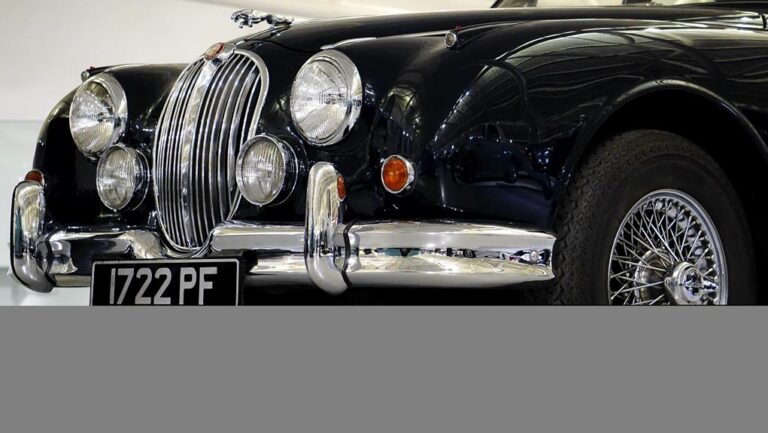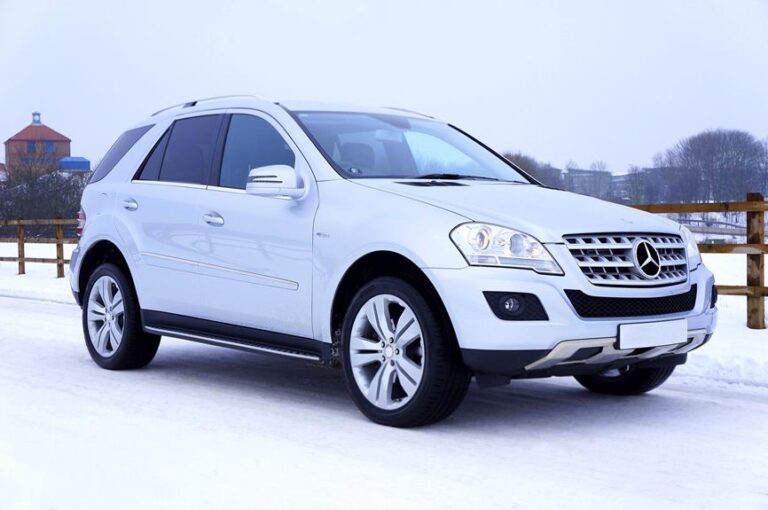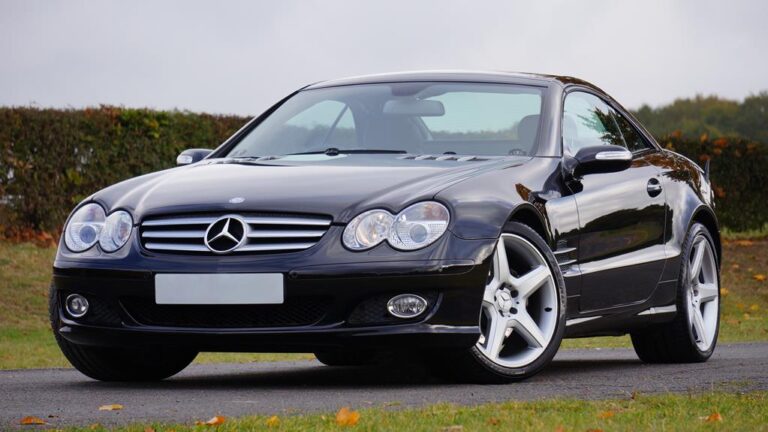Comparing Tire Costs: Budget Vs. Premium
Are you in the market for new tires but unsure whether to go for budget or premium options? Making this decision requires careful consideration of various factors that can impact both the cost and performance of your tires.
In this article, we will explore the differences between budget and premium tires, analyzing their pricing, durability, performance, safety features, warranty, and overall value.
By the end, you'll have the knowledge you need to make an informed decision that suits your budget and desires for freedom on the road.
Key Takeaways
- Pricing plays a significant role in tire selection, with budget tires having a lower price point and premium tires offering superior performance and durability.
- Premium tires are designed to be more durable and may be more cost-effective in the long run, while budget tires may need to be replaced more frequently.
- Premium tires offer superior grip, traction, and handling, providing better cornering and stability at high speeds, while budget tires may lack grip and affect handling and safety.
- Premium tires come with advanced safety features, a longer warranty period, and additional benefits, while budget tires prioritize cost savings over safety technologies.
Importance of Pricing: Budget Vs. Premium
Why is pricing such a crucial factor when considering the choice between budget and premium tires? When it comes to purchasing tires, pricing comparison plays a significant role in the decision-making process for consumers. Consumers have the freedom to choose between budget and premium tires based on their preferences.
A pricing comparison between budget and premium tires is essential as it allows consumers to make an informed decision based on their budget constraints. Budget tires typically have a lower price point, making them more appealing to cost-conscious consumers. On the other hand, premium tires often come with a higher price tag, but they offer superior performance and durability.
Consumer preferences also play a crucial role when comparing tire prices. Some consumers prioritize cost-effectiveness and opt for budget tires as they meet their basic needs without breaking the bank. Others prioritize safety and performance, leading them to choose premium tires that offer better traction, handling, and longer tread life.
Analyzing the pricing comparison between budget and premium tires allows consumers to evaluate the trade-offs and benefits associated with each option. It helps them strike a balance between their budget constraints and their desired tire performance, ensuring they make a well-informed decision that meets their individual needs and preferences.
Factors Affecting Tire Costs: Budget Vs. Premium
One of the key considerations when comparing the costs of budget and premium tires is the impact of various factors on their prices. These factors include tread patterns and tire technology.
Tread patterns play a crucial role in determining the performance and longevity of a tire. Premium tires often feature advanced tread patterns that are designed to provide superior traction and handling on different road conditions. These patterns are optimized to minimize wear and tear, resulting in longer-lasting tires. On the other hand, budget tires tend to have less advanced tread patterns, which may lead to reduced performance and a shorter lifespan.
Tire technology is another factor that affects the cost of tires. Premium tires often incorporate the latest advancements in tire technology, such as advanced rubber compounds and innovative construction techniques. These technologies enhance the tire's performance, durability, and fuel efficiency. Budget tires, on the other hand, may not feature the same level of technology, leading to a compromise in performance and overall quality.
While budget tires may be more affordable initially, it is important to consider the long-term costs. Premium tires, with their advanced tread patterns and tire technology, often provide better performance, durability, and fuel efficiency, resulting in potential cost savings in the long run.
Ultimately, the choice between budget and premium tires depends on individual needs, preferences, and budget constraints.
Durability and Longevity: Budget Vs. Premium
When comparing budget and premium tires, one key factor to consider is durability and longevity.
Budget tires may have a shorter lifespan compared to premium tires, as they are often made with lower quality materials and construction.
On the other hand, premium tires are designed to be more durable and can offer a longer lifespan due to their higher quality components.
Budget Tire Lifespan
Our team has found that budget tires tend to have a shorter lifespan compared to their premium counterparts, which may impact the overall cost-effectiveness of choosing budget options.
When it comes to budget tire quality, it is crucial to consider the lifespan of these tires. While they may initially seem like a more affordable choice, the shorter lifespan means they may need to be replaced more frequently, resulting in additional costs over time.
On the other hand, premium tires may be more expensive upfront, but their longer lifespan can make them more cost-effective in the long run. It is important for consumers to weigh the initial cost against the potential savings in the future when making a decision.
Ultimately, considering both budget tire quality and premium tire cost-effectiveness is essential in making an informed choice.
Premium Tire Durability
The durability of premium tires is a key factor to consider when comparing them to budget options. Premium tire performance is often superior to that of budget tires, as they are designed with advanced technology and high-quality materials. These tires undergo rigorous testing to ensure their reliability and longevity.
Premium tires are built to provide excellent traction, handling, and braking capabilities, which ultimately enhance the overall driving experience and safety. In contrast, budget tire reliability may be compromised due to the use of lower-grade materials and less stringent manufacturing processes. This can result in shorter lifespan, reduced performance, and potentially unsafe driving conditions.
Ultimately, the decision between premium and budget tires should be based on individual needs, priorities, and budget considerations. However, it is important to recognize that investing in premium tires can offer long-term benefits in terms of durability, performance, and overall driving satisfaction.
Performance and Handling: Budget Vs. Premium
The performance and handling of budget and premium tires vary significantly, impacting the overall driving experience. When comparing the two, it is important to consider the following factors:
- Grip and Traction: Premium tires often offer superior grip and traction, especially in wet or icy conditions. They are designed with advanced tread patterns and rubber compounds to provide better control and stability on the road. Budget tires, on the other hand, may not have the same level of grip, which can affect handling and safety.
- Cornering and Stability: Premium tires are engineered to provide better cornering and stability at high speeds. They offer improved responsiveness and control, allowing drivers to navigate curves and corners with confidence. Budget tires may not offer the same level of performance, resulting in reduced stability and potentially compromising safety.
- Noise and Comfort: Premium tires are designed to minimize road noise and provide a smoother, more comfortable ride. They often feature advanced noise-reducing technologies and superior shock absorption capabilities. Budget tires may produce more noise and vibrations, leading to a less enjoyable driving experience.
Ultimately, the choice between budget and premium tires depends on individual preferences and priorities. While budget tires may offer cost savings, premium tires generally provide better performance and customer satisfaction. It is essential to consider factors such as driving conditions, vehicle type, and personal driving style when making a decision.
Safety Features: Budget Vs. Premium
When it comes to safety features, there are notable differences between budget and premium tires.
Budget tires often prioritize cost savings over advanced safety technologies, offering basic features such as traction control and anti-lock braking systems.
On the other hand, premium tires tend to offer a wider range of advanced safety features, such as lane departure warning systems, adaptive cruise control, and even advanced emergency braking systems.
However, the question arises whether the higher cost of premium tires is justified by the added safety features or if budget tires provide sufficient safety for everyday driving.
Budget Tire Safety Features
Among the numerous safety features available in budget tires, three stand out as crucial for ensuring optimal road grip and enhanced braking performance:
- Tread Design: Budget tire technology has evolved to offer advanced tread designs that provide better traction on various road surfaces. These designs incorporate grooves and sipes to improve grip and channel water away from the tire, reducing the risk of hydroplaning.
- Compound Formulation: Affordable tire options now include compounds that enhance grip and braking performance. These formulations are specifically engineered to maintain flexibility in different weather conditions, ensuring better traction on dry, wet, or snowy roads.
- Reinforced Sidewalls: Budget tires are now equipped with reinforced sidewalls, which improve stability and cornering performance. This feature enhances overall handling and reduces the risk of blowouts or sudden tire failure.
With these safety features, budget tires can provide a reliable and cost-effective option for drivers who prioritize safety without compromising on performance and durability.
Premium Tire Safety Features
Comparing the advanced tread designs, compound formulations, and reinforced sidewalls of budget tires to those found in premium options reveals notable disparities in safety features.
Premium tire technology has seen significant advancements in recent years, leading to the incorporation of advanced safety features that enhance both performance and protection. These features include innovative tread patterns that improve traction on wet and dry surfaces, specialized compound formulations that enhance grip and reduce braking distances, and reinforced sidewalls that provide improved stability and durability.
These advanced safety features not only contribute to a better driving experience but also play a crucial role in ensuring the safety of the driver and passengers.
While budget tires may offer cost savings, it is important to consider the potential compromises in safety that come with them. Opting for premium tires with advanced safety features can provide peace of mind and a higher level of protection on the road.
Cost Vs. Safety?
While budget tires may offer cost savings, it is essential to evaluate the safety features of both budget and premium options to ensure optimal protection on the road. When considering the cost vs. quality dilemma, it is important to weigh the following factors:
- Traction: Premium tires often offer better traction, especially in wet or snowy conditions, reducing the risk of skidding or sliding.
- Durability: Budget tires may wear out faster, leading to more frequent replacements. Premium tires, on the other hand, are often designed to last longer, providing better long-term value.
- Noise and Comfort: Premium tires tend to provide a smoother, quieter ride due to advanced noise-reduction technology.
Ultimately, the decision between budget and brand tires depends on individual needs and priorities. While budget tires may save money upfront, investing in premium options can offer greater safety, durability, and overall performance on the road.
Warranty and Customer Support: Budget Vs. Premium
Our team has extensively reviewed the warranty and customer support options for both budget and premium tires.
When it comes to warranty coverage, budget tires typically offer a limited warranty that covers manufacturing defects and workmanship for a specific period, usually around 2-3 years. On the other hand, premium tires often come with a longer warranty period, ranging from 5-7 years, and may also offer additional benefits such as road hazard coverage and mileage warranties.
In terms of customer satisfaction, it is important to consider the overall reputation of the tire brand. Budget tires may be more affordable, but they may not always provide the same level of customer support as premium tires. Many premium tire brands have established customer service departments that are readily available to address any concerns or issues that customers may have.
However, it is worth noting that customer satisfaction can vary depending on individual experiences. Some budget tire brands may surprise customers with excellent customer support, while some premium tire brands may fall short in this aspect. Therefore, it is crucial for consumers to do thorough research and read customer reviews before making a purchasing decision.
Maintenance and Repair Costs: Budget Vs. Premium
When considering maintenance and repair costs, it is important to take into account the long-term savings potential of premium tires compared to budget options. While budget tires may initially seem like a more cost-effective choice, they may end up costing more in the long run due to their lower quality and shorter lifespan.
Here are three key points to consider when comparing maintenance and repair costs between budget and premium tires:
- Durability: Premium tires are engineered with higher quality materials and advanced technologies, making them more durable and resistant to wear and tear. This means they are less likely to require frequent repairs or replacements, ultimately saving you money on maintenance costs.
- Safety: Premium tires are designed to provide superior traction, handling, and braking performance, especially in adverse weather conditions. This enhanced safety feature can help prevent accidents and reduce the risk of costly repairs or medical expenses.
- Fuel Efficiency: Premium tires often have lower rolling resistance, which means they require less energy to move. This can lead to improved fuel efficiency and cost savings at the pump over time.
While premium tires may have a higher upfront cost, their long-term savings potential in terms of maintenance and repair costs, safety, and fuel efficiency make them a worthwhile investment for those who value both quality and cost-effectiveness.
Overall Value for Money: Budget Vs. Premium
Both budget and premium tires offer their own advantages, but when it comes to overall value for money, premium tires prove to be a more cost-effective choice in the long run. While budget tires may seem appealing due to their lower upfront cost, they often lack the same level of quality and durability as premium tires.
One key factor to consider in the tire quality comparison is the tread life. Premium tires are typically made from higher-quality materials and designed with advanced tread patterns, resulting in longer-lasting tires. This means that even though the initial cost may be higher, premium tires will need to be replaced less frequently, saving you money in the long term.
In addition, premium tires often provide better traction, handling, and performance on the road. They are engineered to deliver superior grip and stability, especially in wet or snowy conditions. This not only enhances your driving experience but also improves safety.
Furthermore, premium tires often come with additional features such as noise reduction technology and improved fuel efficiency. These factors contribute to a more comfortable and economical driving experience.
Frequently Asked Questions
How Does the Pricing of Budget Tires Compare to Premium Tires?
When comparing tire costs, it is important to assess the pricing and quality of both budget and premium options. Understanding the pricing comparison and quality assessment can help consumers make an informed decision.
What Are Some Factors That Can Affect the Cost of Tires in Both the Budget and Premium Categories?
Factors affecting tire costs include materials used, manufacturing processes, brand reputation, and supply and demand. The comparison of tire quality is essential in determining whether budget or premium tires offer better value for money.
How Long Can I Expect Budget Tires to Last Compared to Premium Tires?
The lifespan of budget tires compared to premium tires is a key consideration for consumers. Understanding the durability and longevity of budget tires in relation to their cost can help inform purchasing decisions.
Do Budget Tires Offer the Same Level of Performance and Handling as Premium Tires?
When comparing the performance and handling of budget tires to premium tires, it is important to consider factors such as tread design, rubber compound, and construction. Additionally, the cost comparison will vary based on individual needs and preferences.
What Safety Features Are Typically Found in Budget Tires Compared to Premium Tires?
Budget tires typically have lower treadwear and traction ratings compared to premium tires. While they may lack certain advanced safety features found in premium tires, they still meet minimum safety standards and provide reliable performance for everyday driving.
Conclusion
In conclusion, comparing budget and premium tires reveals significant differences in terms of pricing, durability, performance, safety features, warranty, and overall value for money.
While budget tires may be more affordable initially, premium tires offer enhanced durability, better performance, advanced safety features, and comprehensive warranty coverage.
It is noteworthy that studies have shown that premium tires tend to last longer, with an average lifespan of 50,000 miles, compared to 30,000 miles for budget tires, making them a more cost-effective choice in the long run.







